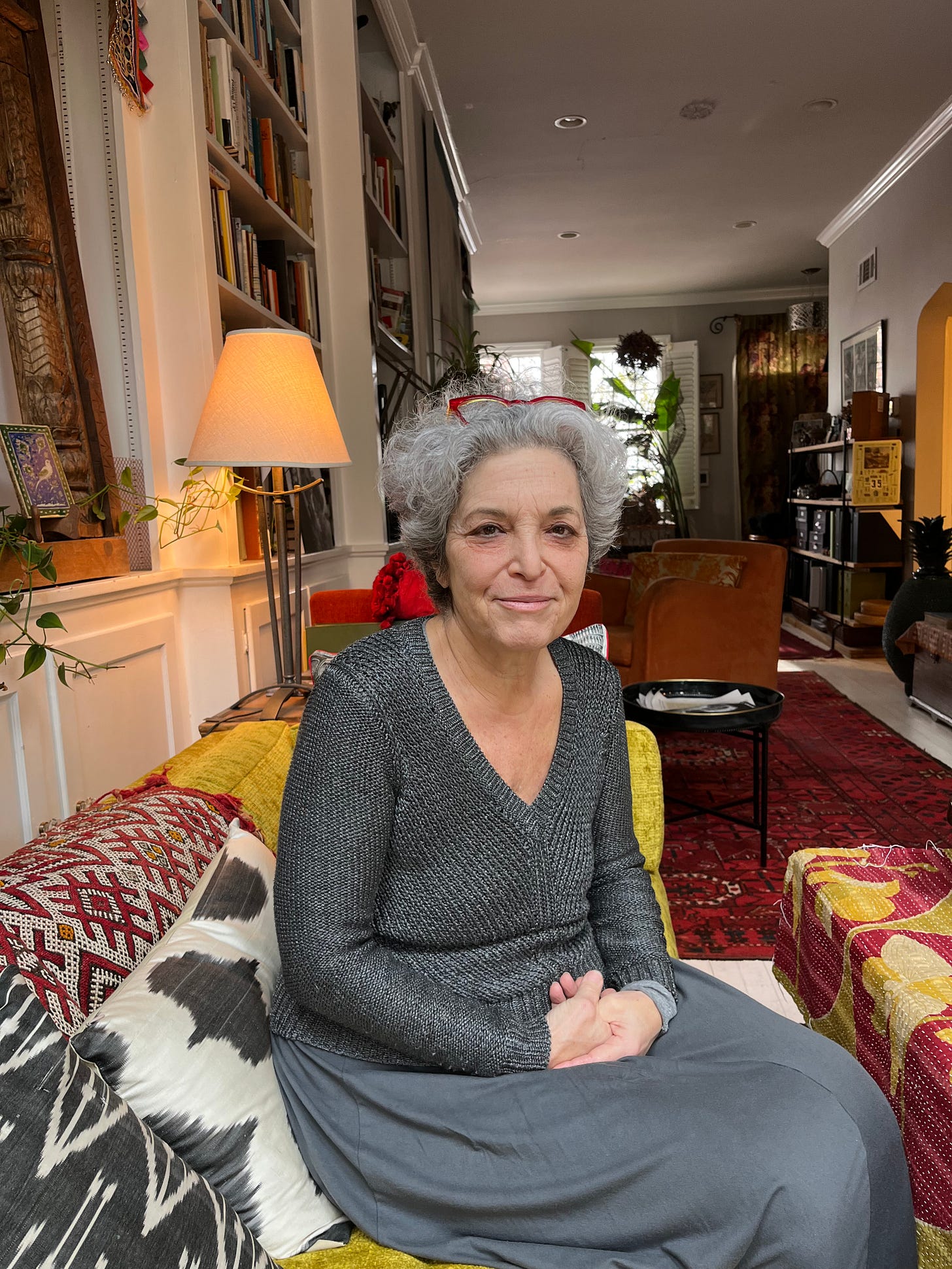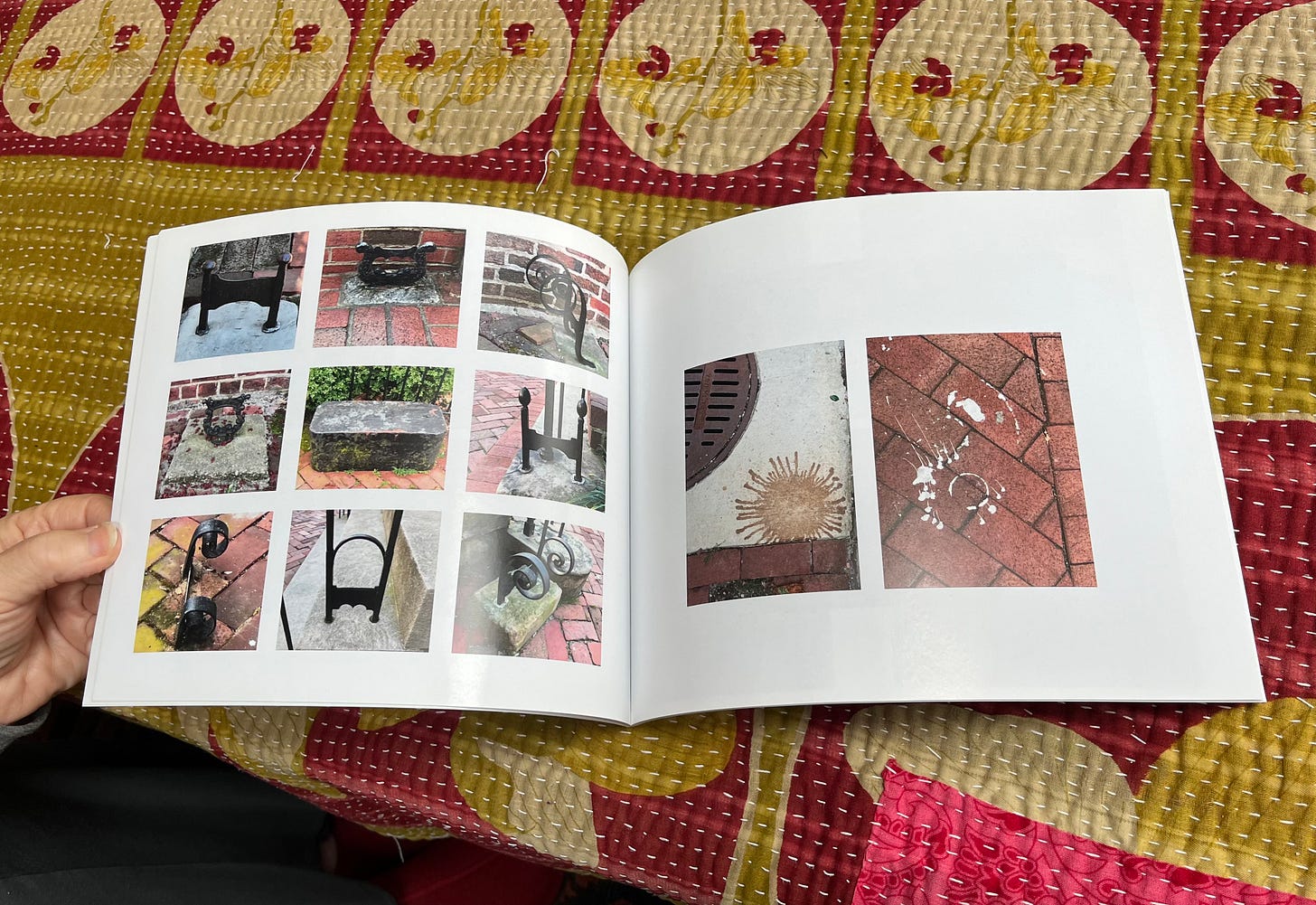Some professional news before we get into today’s Most Interesting Person in D.C.: I just published a big profile of Rachel Tashjian, the Washington Post fashion critic. Tashjian is perhaps the most exciting fashion writer working today. Her opinions are sharp, but just as important, reading her columns is fun. Talk about a writer with voice and panache.
I met up with Tashjian for lunch in midtown, and then we took a stroll around Central Park with her dachshund, Ritz, who is named for the hotel, not the cracker. (But, she mused: “He has more the energy of the cracker, don’t you think?”) As you’ll see in the photos that ran with my story, Ritz is adorable and very small. When I asked Tashjian what stresses her out in this life, his teeniness was right up there with politics and parental aging.
None of that made it into the story. Here’s what did: the fact that Tashjian doesn’t want to be friends with designers, her origin story as a fashion blogger to an audience of one, and some delightful comments from her husband, Lloyd Wise, about how she talks like an old movie star. Plus: insights from some of her more illustrious readers, including filmmakers Miranda July and Janicza Bravo, celebrity stylist Danielle Goldberg, and GQ editor Will Welch.
Read it on SSENSE! And share it with the person in your life with the most fizz, flair, and joie de vivre :)
When I started running The Most Interesting Person in D.C., a series about intriguing people contributing to the city’s creative scene, I put out a call for interview suggestions on social media. Among the tips was a DM from Laura Reilly, of the shopping newsletter Magasin. She suggested I chat with her mother, Claude Lubroth Reilly, a multi-lingual, multi-talented creative with a background in architecture, magazines, and archaeology, who now spends her time transcribing documents for the Library of Congress.
Scumblettes, this is what The Most Interesting Person is all about! On a chilly morning in January, I visited Lubroth Reilly at her home, a classically charming Georgetown rowhouse filled with art and objects from around the world. (Laura detailed her mother’s incredible things in her newsletter a while back. It’s worth a gander.)
Raised in Spain by American parents — a painter and an architect — Lubroth Reilly moved to the U.S. in 1969 for college. She would go on to live in New York, London, and Costa Rica, pursuing a career in magazine publishing and a master’s in architectural librarianship (that’s the management of materials libraries, in case you were wondering). After her husband passed away, and with her two daughters attending college in California, Lubroth Reilly made her own move back to the U.S. — this time to Washington, D.C., where she has lived since 2010.
Over tea, Lubroth Reilly told me about her career moves, her favorite spots in D.C., and her work for the Library of Congress’s By the People project. Here’s our conversation, condensed and edited for clarity.
I’d love to hear about the content of your days in D.C. How do you spend your time?
Initially what I wanted to do in D.C. was open a gallery. But not a fine arts gallery — I wanted to exhibit objects that people make that they don’t think are “fine.” People make knives, walking sticks, bird houses, things that are amazing. But financially it would never be viable. I made laminated paper jewelry for five or six years. Etsy didn’t work for me at all, but I used to sell at a little farmer’s market on Wednesdays. It was fun, because I got to know the neighborhood, and the neighborhood got to know me.
A friend, right at the beginning of Covid, said, “Hey, the Library of Congress is doing something really interesting — they need people to transcribe Spanish legal documents from, basically, the 15th century to the 19th century.”
Oh, so old old.
Oh, yeah. I’ve been addicted. They say you can do an hour a day — I do three or four.
The documents cover every subject you can imagine: wills, the church, hiring for the Inquisition, agricultural practices, building of canals, reforestation, animals. A lot of the cases brought to court were parents suing the parents of somebody else because a son took advantage of a daughter, promising to marry her, and then reneged. You’re going through this like it’s a telenovela — you just want to know what happens at the end! The unfortunate thing is that you only get one side of the story, because you can’t necessarily find the reply or other side of the case. It’s so much fun.
When you’re not transcribing, what are your favorite spots to visit around the city?
The museums are never disappointing. A lot of people don’t know about Hillwood Estate, Museum & Gardens, but it’s wonderful. The Folger Shakespeare Library is to die for. They have, I don’t know, 50 Shakespeare first folios? [Ed note: The number is even more impressive than that – 82!] The Phillips Collection once in a while is great. For a while I was improving my Russian at the Russian Cultural Center — I made some great friends, and that was an insight into a difficult time in U.S.-Russia relations.
I love Dumbarton Oaks, both the garden and the museum. That little Philip Johnson pavilion is unique — it has an extraordinary pre-Columbian exhibition that, every time I go, I see something new. I’ve been maybe 20 or 25 times.
I like Rodman’s. It’s a store on Wisconsin Ave. [in Friendship Heights] that has all these foreign foods. It’s where I get my Spanish paella rice, but they have Russian, German, English stuff. I have a few little restaurants that I like — Kafe Leopold is like walking into Vienna. It’s in Cady’s Alley. And then there’s a wonderful little jewelry store called Jewelers’Werk. It’s tiny, but it’s filled to the brim with amazing jewelry.
Selfishly, I would love to hear about your career in publishing. Can you tell me about that time in your life?
I had spent a year in Israel, working in archaeology. Then I went to London, around 1975 or 1976, and worked at an architecture bookstore. The bookstore owner also published an architecture magazine, and they needed somebody to help in the editorial offices, so I started there.
It was a hard time in England, right before Thatcher came in. I had been trying to get a visa, but it wasn’t forthcoming. I had an American passport, so I decided to give [the U.S.] a try. A friend was with [the art book publisher] Rizzoli in New York, and she said, “Come and work at the bookstore.” They needed help in the editorial offices, so I went and worked there, answering the phone for the boss. It was so difficult because he avoided talking to so many people. I mean, these were big name people: Robert Stern, Richard Meier. Everybody was a little prima donna that needed a lot of taking care of.
I went to an architecture and design magazine called Metropolis. I became more or less the managing editor. Then I met my husband, and we decided maybe we should put roots down. We lived outside New York and then he got a job in London, so I worked at the publisher of Blueprint magazine in London. I got pregnant, and it was hard to work with a baby, even though I had some help at the house. So I started freelancing for them, cataloguing their photos. Then I decided to formalize that and took the library course. But we moved to Costa Rica, so I didn’t quite finish my degree.
You’ve lived in so many places. What’s your advice for making a new city feel like home?
You have to make your nest. That’s really, really important.
I like to walk everywhere or take public transport above ground, because that's when you see things. At one point, I had to go to a part of D.C. that I’d never been, and it was extraordinary. It felt like Washington from the ’50s or ’60s. It was Southeast, I think, and so fun to discover. The amount of architectural detail here — I made a little book of my Washington details. The doors, the handles, the colors.
Can I see this book?
I walk, and I photograph things. I send a Christmas card that’s always a graphic red and green image that’s not plants. Plants are not allowed. So I’m constantly looking at details. The city is very rich in that way. And it’s art for free! It might not be considered art by the people who are doing it, but it means something.
Do you have a lot of other books like this?
I made one for my laminated paper jewelry.
How did you start making the laminated jewelry?
The lady who lived here before me would get all these fashion magazines. Going through the magazines, I would think, Oh, these shoes are cute. I’ll cut them out. I thought maybe I could laminate them and then find a way to attach them. And then I got addicted and couldn’t stop. People would save magazines for me.
[Looking at a necklace made of cutout eggs and chickens] These are so charming!
I like chickens. My kitchen is full of them.
Do you know someone who I should feature in The Most Interesting Person in D.C.? Hit reply to this email and send me a tip!
I’ve got a bunch of fun interviews coming up soon, with fascinating people in fashion, film, and fine dining. If you hate culture and vibrant creativity, now’s your chance to unsubscribe!
Off to gaze at the cherry blossoms,
Eliza








What a divine feature on Rachel Tashjian. Loved this phrasing: “a certain worthy hunger for pleasure and beauty.”
I loved this. Madame Lubroth Reilly is aspirational and inspirational.